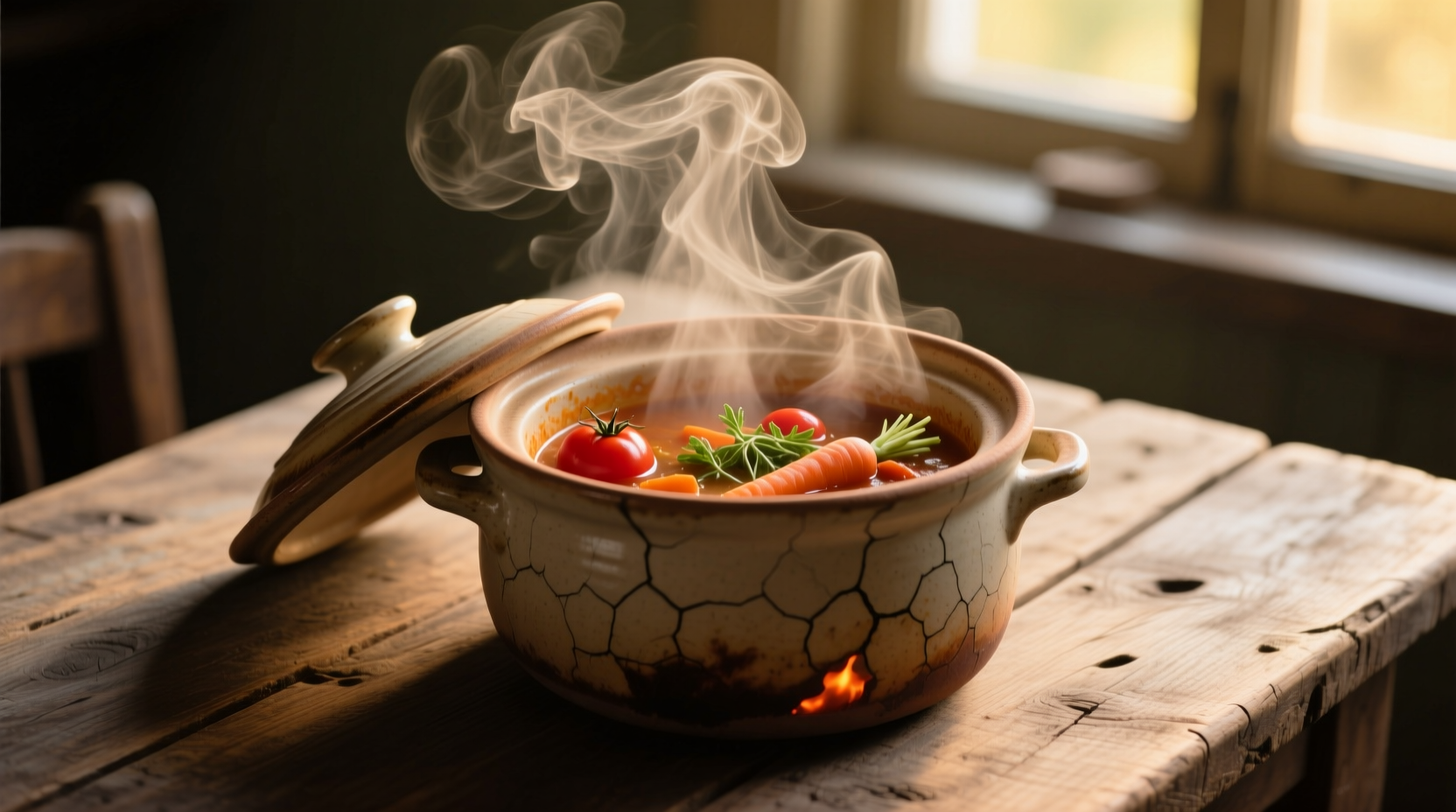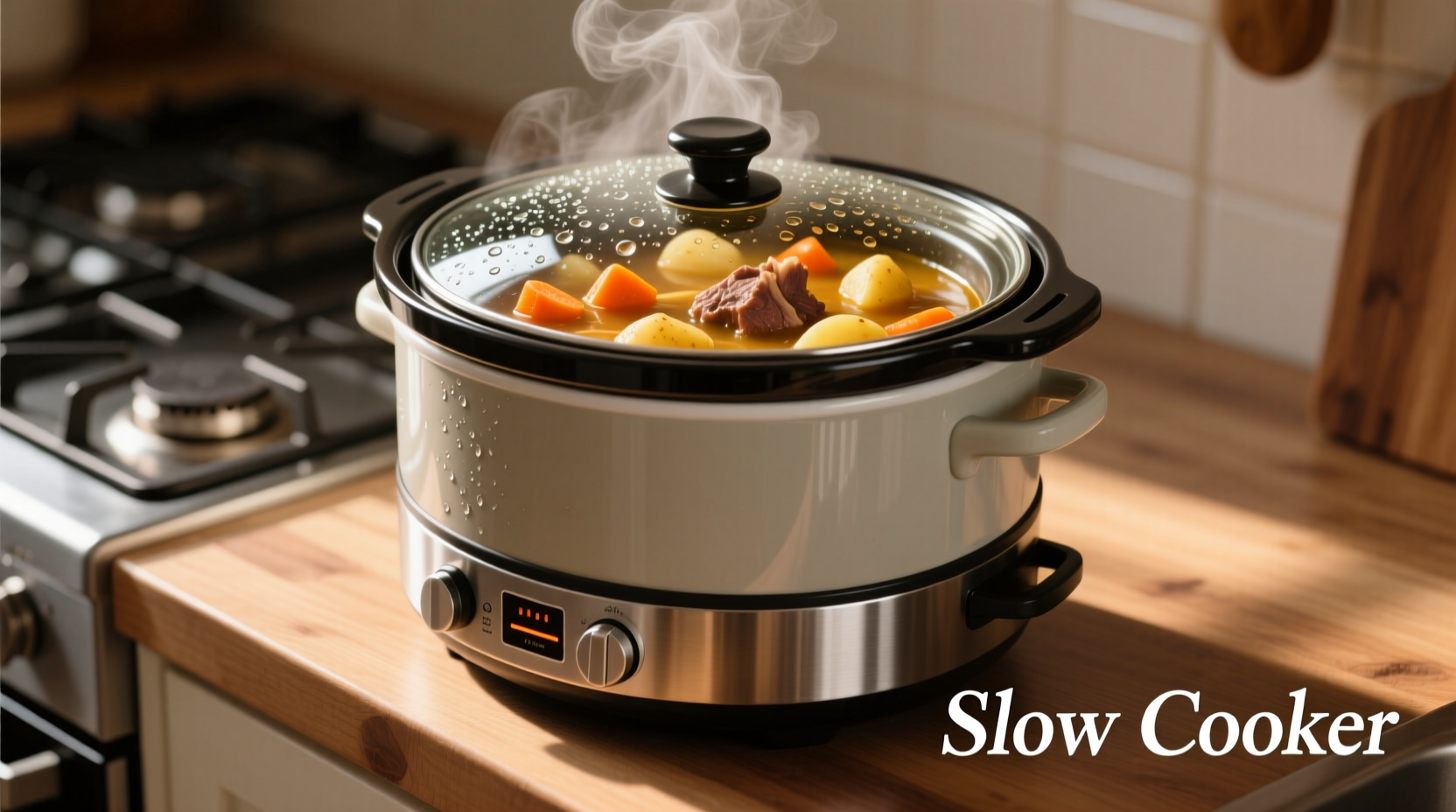Discover how this kitchen essential transforms simple ingredients into complex, restaurant-quality meals while freeing up your time for other activities. Whether you're meal prepping for the week or hosting a dinner party, understanding slow cooker fundamentals unlocks culinary possibilities that balance convenience with exceptional flavor development.
How Slow Cookers Transform Your Cooking Experience
Slow cookers operate on a straightforward yet scientifically sound principle: low, moist heat applied over time breaks down connective tissues in meats while allowing flavors to meld gradually. Unlike conventional cooking methods that rely on high heat for quick results, slow cookers maintain a consistent temperature range that prevents proteins from seizing up, resulting in remarkably tender dishes.
The cooking process happens inside a ceramic or porcelain insert surrounded by heating elements in the outer housing. This design creates gentle convection currents that circulate heat evenly without hot spots. Modern models typically offer three temperature settings:
| Setting | Temperature Range | Typical Cooking Time | Best For |
|---|---|---|---|
| Low | 170°-200°F (77°-93°C) | 7-10 hours | Tougher cuts of meat, soups, stews |
| High | 250°-280°F (121°-138°C) | 3-6 hours | Quicker meals, reheating |
| Warm | 165°F (74°C) | Up to 4 hours | Serving finished dishes |
Evolution of Slow Cooking Technology
The slow cooker's journey from humble beginnings to kitchen staple reflects changing lifestyles and technological advancements. Understanding this timeline helps appreciate why modern versions deliver such reliable results:
- 1936: The Naxon Utilities Corporation introduces the "Beanery," designed specifically for preparing baked beans overnight
- 1971: Rival Corporation rebrands the appliance as the "Crock-Pot" (now a genericized trademark), making it mainstream with versatile ceramic inserts
- 1980s: Programmable timers and automatic warm settings become standard features
- 2000s: Digital controls, searing functions, and connectivity features transform slow cookers into multifunctional appliances
- Today: Smart slow cookers with Wi-Fi connectivity allow remote monitoring and control through mobile apps
According to the U.S. Department of Energy, modern slow cookers use approximately 0.7-1.2 kWh per cooking cycle, making them significantly more energy-efficient than conventional ovens which typically consume 2.0-2.5 kWh per hour.

Practical Benefits That Make Slow Cookers Indispensable
What sets slow cookers apart isn't just convenience—it's the unique culinary advantages they provide through controlled, prolonged cooking:
Flavor Development Through Time
The extended cooking time allows for Maillard reactions and collagen breakdown to occur gradually, creating complex flavor compounds that high-heat methods can't replicate. Tough cuts like chuck roast transform into fork-tender masterpieces as collagen converts to gelatin at temperatures maintained for hours.
Energy Efficiency Compared to Alternatives
Running a slow cooker for 8 hours consumes about the same energy as operating a conventional oven for 35-55 minutes. This efficiency makes slow cookers particularly valuable during summer months when minimizing kitchen heat is desirable.
Safety and Convenience Advantages
Unlike stovetop cooking, slow cookers maintain temperatures safely above the USDA's danger zone (40°F-140°F), reducing foodborne illness risks. The sealed environment prevents splatters and maintains consistent temperatures even during power fluctuations.
When a Slow Cooker Shines (and When It Doesn't)
Understanding the appliance's limitations ensures optimal results. Slow cookers excel with certain ingredients and techniques while struggling with others:
Ideal Applications
- Braised meats (pot roast, pulled pork, beef stew)
- Bean dishes and legumes (no pre-soaking required)
- Chili and hearty soups
- Stocks and broths (up to 24 hours)
- Desserts like bread pudding
Limitations to Consider
- Dairy products: Add near the end to prevent curdling
- Delicate vegetables: Add in the last 1-2 hours to maintain texture
- Crispy textures: Not suitable for foods requiring browning or crunch
- Alcohol-based sauces: Alcohol doesn't fully evaporate at low temperatures
Food safety expert Dr. Catherine Strohbehn from Iowa State University Extension notes: "Slow cookers reach temperatures high enough to destroy harmful bacteria, but users must ensure frozen foods are fully thawed before cooking and avoid lifting the lid frequently, which can drop the internal temperature significantly."
Getting Started with Your Slow Cooker
Mastering these fundamentals ensures safe, delicious results every time:
Proper Filling Levels
Fill your slow cooker between one-half and three-quarters full. Overfilling prevents proper heat circulation, while underfilling can cause excessive evaporation and potential overheating.
Layering Ingredients Strategically
Place dense, slow-cooking items like root vegetables at the bottom where heat concentration is highest. Position meats above vegetables, and add delicate ingredients during the final cooking stage.
Managing Liquid Content
Unlike stovetop cooking, slow cookers require less liquid since evaporation is minimal. Reduce standard recipe liquids by about 25% unless cooking dried beans (which require ample water).
Cleaning and Maintenance Tips
Allow the ceramic insert to cool completely before cleaning. Never place a hot insert in cold water, which can cause cracking. Most modern inserts are dishwasher-safe, but hand washing preserves longevity. Always unplug and wipe the exterior housing with a damp cloth—never immerse the base unit in water.











 浙公网安备
33010002000092号
浙公网安备
33010002000092号 浙B2-20120091-4
浙B2-20120091-4